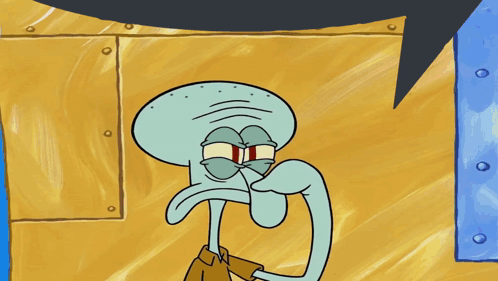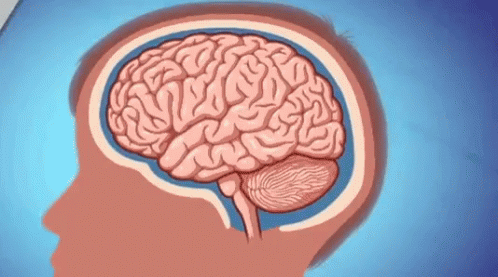🧠 Understanding the Central Nervous System: From Nerves to Knockouts

Varrock Street Journal | Health Sciences Newsletter
Have you ever wondered what truly keeps you standing, thinking, and reacting all at once? From blinking when something flies at your face to recalling your best childhood memory, your central nervous system (CNS) is quietly orchestrating everything behind the scenes. And yet, it’s one of the most vulnerable systems in the human body—especially when it comes to trauma like concussions.
In today’s edition, we’ll dive into the CNS’s structure and function, explore how injuries like concussions disrupt it, and look at the science behind how we diagnose and manage these seemingly invisible threats.

🧠 The Central Nervous System 101
The CNS is made up of two main structures: the brain and spinal cord. It’s responsible for processing sensory data, regulating movement, controlling emotions, memory, and managing vital body functions. Think of it as your body’s electrical command center. Every thought, reflex, and breath depends on the brain and spinal cord working in harmony.
But this system—though highly protected by the skull and vertebrae—is still delicate. Even minor trauma can send a ripple effect through the CNS that causes long-lasting consequences.
🚑 Spotlight: What Happens During a Concussion?
A concussion is a mild traumatic brain injury (TBI) caused by a blow, bump, or jolt to the head (or body) that makes the brain shake inside the skull. Despite being labeled "mild," concussions can severely disrupt brain function.
Common symptoms include:
- Headache or pressure in the head
- Confusion or fogginess
- Memory problems
- Nausea or vomiting
- Sensitivity to light or noise
- Sleep disturbances
Symptoms may appear right away—or days later—and can last for weeks or longer if not properly managed.

⚕️ Concussion Management: What Science Recommends
Gone are the days when athletes were told to “walk it off.” Modern concussion care is based on early recognition, cognitive rest, and a stepwise return to normal activity. Here's how it typically works:
- Immediate Removal from Play: If a concussion is suspected, the person must be removed from the activity immediately.
- Initial Evaluation: A medical provider evaluates memory, balance, coordination, and eye movements.
- Physical & Cognitive Rest: This involves avoiding screen time, reading, and intense physical activity for the first 24–48 hours.
- Gradual Return: Activities are reintroduced slowly, and any return of symptoms means slowing down or restarting the rest phase.
- Neuropsychological Testing: In some cases, testing can assess cognitive recovery and guide return-to-play decisions.
New research is also exploring biomarkers, blood tests, and AI-based eye tracking to improve concussion diagnosis and predict recovery timelines.
🧠 Why This Matters:
Concussions can happen to anyone—from athletes and soldiers to toddlers and car crash victims. Because the brain controls nearly every function in the body, even mild injuries can cause ripple effects on mental health, school performance, and quality of life.
Understanding how to recognize, respect, and recover from a concussion is key to preventing long-term damage like chronic traumatic encephalopathy (CTE), persistent post-concussive syndrome, or depression.
Here is a video discussing concussions and TBI!tram
🔭 Spotlight on Future Applications
The future of concussion care may include:
- Wearable head-impact sensors in sports
- Machine learning to analyze speech or gait for early signs of brain injury
- Personalized recovery timelines using blood-based biomarkers
- Telehealth concussion clinics for rural and underserved communities
We're also seeing innovation in CNS repair, with therapies targeting inflammation, promoting nerve regrowth, and enhancing brain plasticity. A true frontier of medicine.
💡 Did You Know?
A single concussion doubles the risk of developing another, and multiple concussions can slow cognitive processing even years after the injuries. However, early recognition and proper management dramatically reduce these risks.
🧠 Reflection Questions:
- Have you ever experienced a concussion or known someone who has? What helped most in their recovery?
- How can schools, workplaces, and sports organizations better respond to suspected concussions?
- If new blood or eye-tracking tests could identify concussions instantly, how might this change treatment timelines?
🧾 References:
- Centers for Disease Control and Prevention (CDC) – Concussion and Traumatic Brain Injury
- Mayo Clinic – Concussion Symptoms and Treatment
- Giza, C.C. et al. (2014). “Concussion Pathophysiology: A Review” – PM&R Journal
- McCrory, P. et al. (2017). “Consensus statement on concussion in sport—The Berlin 2016 update.” British Journal of Sports Medicine
📣 Follow us for more engaging science breakdowns!
📲 Instagram | TikTok | 🌐 Website
📲 Instagram | TikTok | 🌐 Website📣 Follow us for more engaging science breakdowns!McCrory, P. et al. (2017). “Consensus statement on concussion in sport—The Berlin 2016 update.” British Journal of Sports MedicineGiza, C.C. et al. (2014). “Concussion Pathophysiology: A Review” – PM&R JournalMayo Clinic – Concussion Symptoms and TreatmentCenters for Disease Control and Prevention (CDC) – Concussion and Traumatic Brain Injury🧾 References:If new blood or eye-tracking tests could identify concussions instantly, how might this change treatment timelines?How can schools, workplaces, and sports organizations better respond to suspected concussions?Have you ever experienced a concussion or known someone who has? What helped most in their recovery?🧠 Reflection Questions:A single concussion doubles the risk of developing another, and multiple concussions can slow cognitive processing even years after the injuries. However, early recognition and proper management dramatically reduce these risks.💡 Did You Know?We're also seeing innovation in CNS repair, with therapies targeting inflammation, promoting nerve regrowth, and enhancing brain plasticity. A true frontier of medicine.Telehealth concussion clinics for rural and underserved communitiesPersonalized recovery timelines using blood-based biomarkersMachine learning to analyze speech or gait for early signs of brain injuryWearable head-impact sensors in sportsThe future of concussion care may include:🔭 Spotlight on Future ApplicationsUnderstanding how to recognize, respect, and recover from a concussion is key to preventing long-term damage like chronic traumatic encephalopathy (CTE), persistent post-concussive syndrome, or depression.Concussions can happen to anyone—from athletes and soldiers to toddlers and car crash victims. Because the brain controls nearly every function in the body, even mild injuries can cause ripple effects on mental health, school performance, and quality of life.🧠 Why This Matters:New research is also exploring biomarkers, blood tests, and AI-based eye tracking to improve concussion diagnosis and predict recovery timelines.Neuropsychological Testing: In some cases, testing can assess cognitive recovery and guide return-to-play decisions.Gradual Return: Activities are reintroduced slowly, and any return of symptoms means slowing down or restarting the rest phase.Physical & Cognitive Rest: This involves avoiding screen time, reading, and intense physical activity for the first 24–48 hours.Initial Evaluation: A medical provider evaluates memory, balance, coordination, and eye movements.Immediate Removal from Play: If a concussion is suspected, the person must be removed from the activity immediately.Gone are the days when athletes were told to “walk it off.” Modern concussion care is based on early recognition, cognitive rest, and a stepwise return to normal activity. Here's how it typically works:⚕️ Concussion Management: What Science RecommendsSymptoms may appear right away—or days later—and can last for weeks or longer if not properly managed.Sleep disturbancesSensitivity to light or noiseNausea or vomitingMemory problemsConfusion or fogginessHeadache or pressure in the headCommon symptoms include:A concussion is a mild traumatic brain injury (TBI) caused by a blow, bump, or jolt to the head (or body) that makes the brain shake inside the skull. Despite being labeled "mild," concussions can severely disrupt brain function.🚑 Spotlight: What Happens During a Concussion?But this system—though highly protected by the skull and vertebrae—is still delicate. Even minor trauma can send a ripple effect through the CNS that causes long-lasting consequences.The CNS is made up of two main structures: the brain and spinal cord. It’s responsible for processing sensory data, regulating movement, controlling emotions, memory, and managing vital body functions. Think of it as your body’s electrical command center. Every thought, reflex, and breath depends on the brain and spinal cord working in harmony.🧠 The Central Nervous System 101In today’s edition, we’ll dive into the CNS’s structure and function, explore how injuries like concussions disrupt it, and look at the science behind how we diagnose and manage these seemingly invisible threats.Have you ever wondered what truly keeps you standing, thinking, and reacting all at once? From blinking when something flies at your face to recalling your best childhood memory, your central nervous system (CNS) is quietly orchestrating everything behind the scenes. And yet, it’s one of the most vulnerable systems in the human body—especially when it comes to trauma like concussions.Introduction:Varrock Street Journal | Health Sciences Newsletter🧠 Understanding the Central Nervous System: From Nerves to Knockouts
ewsletter
Introduction:
Have you ever wondered what truly keeps you standing, thinking, and reacting all at once? From blinking when something flies at your face to recalling your best childhood memory, your central nervous system (CNS) is quietly orchestrating everything behind the scenes. And yet, it’s one of the most vulnerable systems in the human body—especially when it comes to trauma like concussions.
In today’s edition, we’ll dive into the CNS’s structure and function, explore how injuries like concussions disrupt it, and look at the science behind how we diagnose and manage these seemingly invisible threats.
🧠 The Central Nervous System 101
The CNS is made up of two main structures: the brain and spinal cord. It’s responsible for processing sensory data, regulating movement, controlling emotions, memory, and managing vital body functions. Think of it as your body’s electrical command center. Every thought, reflex, and breath depends on the brain and spinal cord working in harmony.
But this system—though highly protected by the skull and vertebrae—is still delicate. Even minor trauma can send a ripple effect through the CNS that causes long-lasting consequences.
🚑 Spotlight: What Happens During a Concussion?
A concussion is a mild traumatic brain injury (TBI) caused by a blow, bump, or jolt to the head (or body) that makes the brain shake inside the skull. Despite being labeled "mild," concussions can severely disrupt brain function.
Common symptoms include:
- Headache or pressure in the head
- Confusion or fogginess
- Memory problems
- Nausea or vomiting
- Sensitivity to light or noise
- Sleep disturbances
Symptoms may appear right away—or days later—and can last for weeks or longer if not properly managed.
⚕️ Concussion Management: What Science Recommends
Gone are the days when athletes were told to “walk it off.” Modern concussion care is based on early recognition, cognitive rest, and a stepwise return to normal activity. Here's how it typically works:
- Immediate Removal from Play: If a concussion is suspected, the person must be removed from the activity immediately.
- Initial Evaluation: A medical provider evaluates memory, balance, coordination, and eye movements.
- Physical & Cognitive Rest: This involves avoiding screen time, reading, and intense physical activity for the first 24–48 hours.
- Gradual Return: Activities are reintroduced slowly, and any return of symptoms means slowing down or restarting the rest phase.
- Neuropsychological Testing: In some cases, testing can assess cognitive recovery and guide return-to-play decisions.
New research is also exploring biomarkers, blood tests, and AI-based eye tracking to improve concussion diagnosis and predict recovery timelines.
🧠 Why This Matters:
Concussions can happen to anyone—from athletes and soldiers to toddlers and car crash victims. Because the brain controls nearly every function in the body, even mild injuries can cause ripple effects on mental health, school performance, and quality of life.
Understanding how to recognize, respect, and recover from a concussion is key to preventing long-term damage like chronic traumatic encephalopathy (CTE), persistent post-concussive syndrome, or depression.
🔭 Spotlight on Future Applications
The future of concussion care may include:
- Wearable head-impact sensors in sports
- Machine learning to analyze speech or gait for early signs of brain injury
- Personalized recovery timelines using blood-based biomarkers
- Telehealth concussion clinics for rural and underserved communities
We're also seeing innovation in CNS repair, with therapies targeting inflammation, promoting nerve regrowth, and enhancing brain plasticity. A true frontier of medicine.
💡 Did You Know?
A single concussion doubles the risk of developing another, and multiple concussions can slow cognitive processing even years after the injuries. However, early recognition and proper management dramatically reduce these risks.
🧠 Reflection Questions:
- Have you ever experienced a concussion or known someone who has? What helped most in their recovery?
- How can schools, workplaces, and sports organizations better respond to suspected concussions?
- If new blood or eye-tracking tests could identify concussions instantly, how might this change treatment timelines?
🧾 References:
- Centers for Disease Control and Prevention (CDC) – Concussion and Traumatic Brain Injury
- Mayo Clinic – Concussion Symptoms and Treatment
- Giza, C.C. et al. (2014). “Concussion Pathophysiology: A Review” – PM&R Journal
- McCrory, P. et al. (2017). “Consensus statement on concussion in sport—The Berlin 2016 update.” British Journal of Sports Medicine
📣 Follow us for more engaging science breakdowns!
📲 Instagram | TikTok | 🌐 Website
